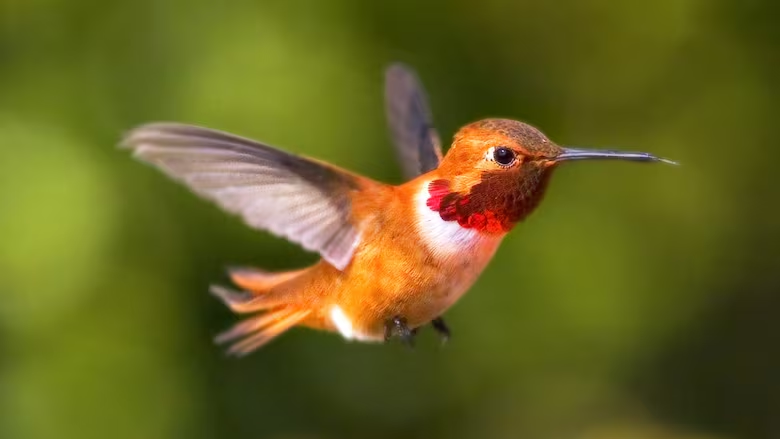Rufous hummingbird population in North America appears to be declining
Grouse Mountain Refuge for Endangered Wildlife has been studying hummingbirds for 10 years

The rufous hummingbird population in North America appears to be declining, likely because their migratory patterns are being affected by development, according to a wildlife expert on Grouse Mountain.
The Grouse Mountain Refuge for Endangered Wildlife has been studying the tiny creatures' migratory patterns and population over the past 10 years by catching them and attaching bands to their legs.
The data is then compiled and shared with other stations throughout North America.
Wildlife manager Devin Manky says the rufous hummingbird, the most common species in Vancouver, migrates from Mexico to Alaska each year before making the return journey in the summer.
However, their numbers appear to be dropping, and the decline may be related to urban development.
"That's the biggest threat to them," Manky told On the Coast. "If they can't make the migration, they can't get here to breed, so that decreases the numbers."
Hummingbirds are faithful to sites, and they will migrate across continents only to return to a particular patch of flowers on a particular hillside.
How to tag a hummingbird
Each year, hundreds of rufous hummingbirds return to Grouse Mountain. Manky says he's already banded about a hundred hummingbirds this season.

To monitor the birds, Manky places a feeder inside a circular trap. When a hummingbird flies into the feeder, he lowers one of the trap's walls so it can't fly away.
Once he takes out the hummingbird, he slips a "straitjacket" made of old baby blankets over the bird's head and wraps it around the bird's body like it's a "hummingbird burrito."
Then he measures the bird's bill, legs and wings and examines its body before wrapping a band around its leg and releasing it.
Manky says that for a hummingbird, the band would feel similar to a bracelet that weighs half a pound for a human. The hummingbirds notice the bands at first, but they get used to it after a while.
"The most common thing for them to do is to go to a branch and start to preen because I've been ruffling up their feathers," he said.
"So it's kind of like, 'Oh, you've messed everything up,' and so they just put all their feathers back into place after the handling."
Listen to the interview: How to catch and band a hummingbird